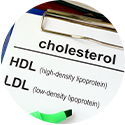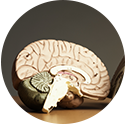Three-quarters of heart attacks in young women could be prevented
A recent study that followed nearly 70,000 women for two decades concluded that three-quarters of heart attacks in young women could be prevented if women closely followed six healthy lifestyle practices.
The study, published in the Journal of the American College of Cardiology, followed participants in a study of nurses established in 1989, which surveyed more than 116,000 participants about their diets and other health habits every two years. Researchers from Indiana University, the Harvard School of Public Health, and Brigham and Women’s Hospital analyzed data on 69,247 of the participants who met the requirements for their study.
“Although mortality rates from heart disease in the U.S. have been in steady decline for the last four decades, women aged 35-44 have not experienced the same reduction,” said Andrea K. Chomistek, ScD, a researcher from the Indiana University School of Public Health-Bloomington and lead author of the paper. “This disparity may be explained by unhealthy lifestyle choices. We wanted to find out what proportion of heart disease cases could be attributed to unhealthy habits.”
Healthy habits were defined as
- not smoking,
- a normal body mass index,
- physical activity of at least 2.5 hours per week,
- watching seven or fewer hours of television a week,
- consumption of a maximum of one alcoholic drink per day on average,
- and a diet in the top 40 percent of a measure of diet quality based on the Harvard School of Public Health healthy eating plate.
Recently we spoke of lifestyle and stroke prevention: Women with a healthy diet and lifestyle may be less likely to have a stroke by more than half, according to a study published recently in the medical journal Neurology, the medical journal of the American Academy of Neurology.
The study looked at five factors that make up a healthy lifestyle:
- healthy diet;
- moderate alcohol consumption;
- never smoking;
- physically active;
- and healthy body mass index (BMI).
Compared with women with none of the five healthy factors, women with all five factors had a 54-percent lower risk of stroke.
“Because the consequences of stroke are usually devastating and irreversible, prevention is of great importance,” said study author Susanna C. Larsson, PhD, of the Karolinska Instituet in Stockholm, Sweden. “These results are exciting because they indicate that a healthy diet and lifestyle can substantially reduce the risk of stroke, and these are lifestyle choices that people can make or improve.”1
The American Heart Association says research suggests that eating more fruits and vegetables may reduce the risk of stroke. Researchers found that stroke risk decreased by 32 percent with every 200 grams of fruit consumed daily and 11 percent with every 200 grams of vegetables consumed daily. The American Heart Association advises the average adult to eat four to five servings each of fruits and vegetables daily, based on a 2,000-calorie diet. A diet rich in a variety of colors and types of vegetables and fruits is a way of getting important nutrients that most people don’t get enough of, including vitamins, minerals, and dietary fiber. They are also naturally low in saturated fat.
Vitamin C may reduce your risk of the most common type of hemorrhagic stroke
Eating foods that contain vitamin C may reduce your risk of the most common type of hemorrhagic stroke, according to a study released at the American Academy of Neurology’s 66th Annual Meeting in 2014.
Vitamin C is found in fruits and vegetables such as oranges, papaya, peppers, broccoli and strawberries. Hemorrhagic stroke is less common than ischemic stroke, but is more often deadly.
The study involved 65 people who had experienced an intracerebral hemorrhagic stroke, or a blood vessel rupture inside the brain. They were compared to 65 healthy people. Participants were tested for the levels of vitamin C in their blood. Forty-one percent of cases had normal levels of vitamin C, 45 percent showed depleted levels of vitamin C and 14 percent were considered deficient of the vitamin.
- On average, the people who had a stroke had depleted levels of vitamin C, while those who had not had a stroke had normal levels of the vitamin.
“Our results show that vitamin C deficiency should be considered a risk factor for this severe type of stroke, as were high blood pressure, drinking alcohol and being overweight in our study,” said study author Stéphane Vannier, MD, with Pontchaillou University Hospital in Rennes, France. “More research is needed to explore specifically how vitamin C may help to reduce stroke risk. For example, the vitamin may regulate blood pressure.”
Vannier adds that vitamin C appears to have other benefits like creating collagen, a protein found in bones, skin and tissues.2
Recent evidence suggests that taking vitamin B supplements may help reduce the risk of stroke.
“Previous studies have conflicting findings regarding the use of vitamin B supplements and stroke or heart attack,” said author Xu Yuming, with Zhengzhou University in Zhengzhou, China. “Some studies have even suggested that the supplements may increase the risk of these events.”
For the research, scientists analyzed 14 randomized clinical trials with a total of 54,913 participants. All of the studies compared B vitamin use with a placebo or a very low-dose B vitamin. Participants were then followed for a minimum of six months.
- There were 2,471 strokes throughout the studies, all of which showed some benefit of taking vitamin B.
- Folic acid, a supplemental form of folate (vitamin B9), which is often found in fortified cereals, appeared to reduce the effect of vitamin B. Researchers did not find a reduction in stroke risk for vitamin B12.
“Based on our results, the ability of vitamin B to reduce stroke risk may be influenced by a number of other factors such as the body’s absorption rate, the amount of folic acid or vitamin B12 concentration in the blood, and whether a person has kidney disease or high blood pressure,” said Yuming. “Before you begin taking any supplements, you should always talk to your doctor.”
Studies have demonstrated that the consumption of fruits and vegetables is associated with reduced risk for cardiovascular disease and stroke. Detailed investigations into the specific dietary components of these foods have revealed that anti-oxidant effects on key substrates involved in the pathogenesis and progression of ischemic injury. Says researchers from the University of Florida: “these data reflect an exciting new direction in the study of complementary and alternative medicine that may lead to the development of novel therapies for ischemic/hemorrhagic stroke, traumatic brain injury, and other neurological disorders.” 3
“Swedish women who ate an antioxidant-rich diet had fewer strokes regardless of whether they had a previous history of cardiovascular disease, in a study reported in Stroke: Journal of the American Heart Association.
People should eat more foods such as fruits and vegetables that contribute to total antioxidant capacity
“Eating antioxidant-rich foods may reduce your risk of stroke by inhibiting oxidative stress and inflammation,” said Susanne Rautiainen, M.Sc., the study’s first author and Ph.D. student at the Karolinska Institutet in Sweden. “This means people should eat more foods such as fruits and vegetables that contribute to total antioxidant capacity.” (From the American Heart Association’s News Room)
Oxidative stress is an imbalance between the production of cell-damaging free radicals and the body’s ability to neutralize them. It leads to inflammation, blood vessel damage and stiffening.
Antioxidants such as vitamins C and E, carotenoids and flavonoids can inhibit oxidative stress and inflammation by scavenging the free radicals. Antioxidants, especially flavonoids, may also help improve endothelial function and reduce blood clotting, blood pressure and inflammation.” 4
Treating Hypertension
At the Magaziner Center for Wellness, before embarking on any treatment plan, we speak to each patient about his or her lifestyle, and run tests to check for vitamin and mineral deficiencies, heavy metal toxicity and insulin resistance, which have all been associated with hypertension.
We concentrate on the B vitamins: “The B-vitamins folate, B-12 and B-6 all play a key role in homocysteine metabolism and in fact it has been proposed that about two-thirds of all cases of hyperhomocysteinemia (abnormally large level of homocysteine in the blood) are due to an inadequate status of one or all of these vitamins. Of the three, folate appears to be the most important determinant and has been shown to significantly lower homocysteine concentration.” 5
When necessary, we help our patients achieve their ideal body weight by making dietary modifications and committing to an exercise routine. Across our practice, but especially with patients who suffer from hypertension, we recommend a “clean” diet – one that is low in sugar and salt, features non-processed foods such as fresh fruit and vegetables and incorporates fish (provided the patient is not vegetarian or vegan) and healthy oils. In cases where there is a lot of weight to be lost, we offer more aggressive strategies – such as medically-based diets that utilize naturally-occurring hormones that stimulate metabolism, suppress appetite and mobilize fat – to help patients achieve marked weight loss, quickly.
If testing confirms that there is an excess body burden of mercury, lead and cadmium (either of all three or of any one), we utilize chelation therapy and other detoxification techniques to cleanse the body, as these metals have been linked to hypertension.
We utilize supplements – including herbals (like Hawthorne), minerals (including magnesium, as a shortage of this mineral may cause hypertension), Omega 3 fatty acids (useful in treating the disorder) and arginine (an amino acid that helps dilate blood vessels).
Lastly, we encourage our patients to seek out – and stick with – stress reduction techniques ranging from prayer and meditation to yoga and Tai Chi to help manage, and in most cases, drastically reduce, their hypertension and related symptoms.
1. S C. Larsson, A. Akesson, A. Wolk. Healthy diet and lifestyle and risk of stroke in a prospective cohort of women. Neurology, 2014; DOI: 10.1212/WNL.0000000000000954
2. Can Citrus Ward Off Your Risk of Stroke?
3. Leonardo CC, Doré S. Dietary flavonoids are neuroprotective through Nrf2-coordinated induction of endogenous cytoprotective proteins.Nutr Neurosci. 2011 Sep;14(5):226-36.
4. Vegetables, fruits, grains reduce stroke risk in women. NR11 – 1180 (Stroke/Rautiainen). The American Heart Association. December 1, 2011.
5. Ward M. Int J Vitam Nutr Res. 2001 May;71(3):173-8. Homocysteine, folate, and cardiovascular disease.




































Recent Comments